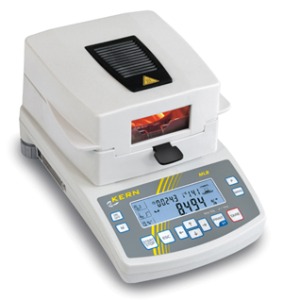A Moisture Analyzer for Shampoo Quality Control
Most everyone has their favorite shampoo and probably pays little attention to what’s inside the tube or bottle – only that it does a good job cleaning hair. Chances are the thickness of the shampoo is important as well – cheaper brands that are thin and watery usually don’t pass muster. Yet water, specifically deionized water – comprises about 70 to 80% of the shampoo formulation with the actual target specified by the manufacturer. Keeping formulations on target is eased with a moisture analyzer for shampoo quality control.
While formulations vary, the approximately 25% non-water contents of shampoo include detergents and surfactants, foam boosters, thickeners and conditioners. Preservatives and modifiers, fragrances and dyes are typically added to the batch then mixed. After the mixing period samples are sent to the quality control lab. Among other tests QC personnel can use a moisture analyzer to determine that the water content is on target before the product is packaged.
How to Perform Moisture Analysis on Shampoo
Moisture analyzers such as the KERN MLB 50-3C available from Tovatech determine moisture content by what is called the thermogravimetric process or loss of weight on drying (LOD). These precision units have a 400-watt halogen heater mounted on an analytical balance. Once programmed to conduct recurring tests they can determine moisture content with minimum input from QC personnel. The balance compares sample weight before and after the drying process with the difference representing moisture content.
Shampoo manufacturers’ QC labs will establish their own moisture analysis procedures, but here is a representative testing cycle:
Prepare the moisture analyzer by programming it for rapid drying at 100⁰C. Rapid drying briefly raises the temperature to above the set level then lowers it to the set temperature.
Place a dry fiberglass filter on the moisture balance sample pan and tare both the pan and the filter.
Using a pipette or other tool, evenly spread 2 grams of shampoo on the filter. The filter helps spread the sample and promotes the drying process. Note: if the shampoo is likely to spatter during the analysis cover it with another tared filter.
Lowering the lid of the moisture analyzer starts the process. You can follow it on the unit’s LED display showing current moisture content, the type of drying, the switch off mode, the previous drying time and current temperature. A typical drying cycle for shampoo will take about 14 minutes and automatically terminate when the dry weight is stable*. This is established when the weight loss per unit of time falls below a specified value.
All test data can be transferred to a PC or printer for record keeping.
For additional information we invite you to download a copy of our moisture analyzer white paper. For answers to specific questions on selecting analyzer for your operations please contact the experts at Tovatech.
*Operators select shutoff criteria depending on the samples under analysis and the required accuracy. Three methods of shutoff are common to most moisture analyzers: (1) automatically when drying is complete and the dry weight is stable, (2) after a specified time, or (3) manually.

